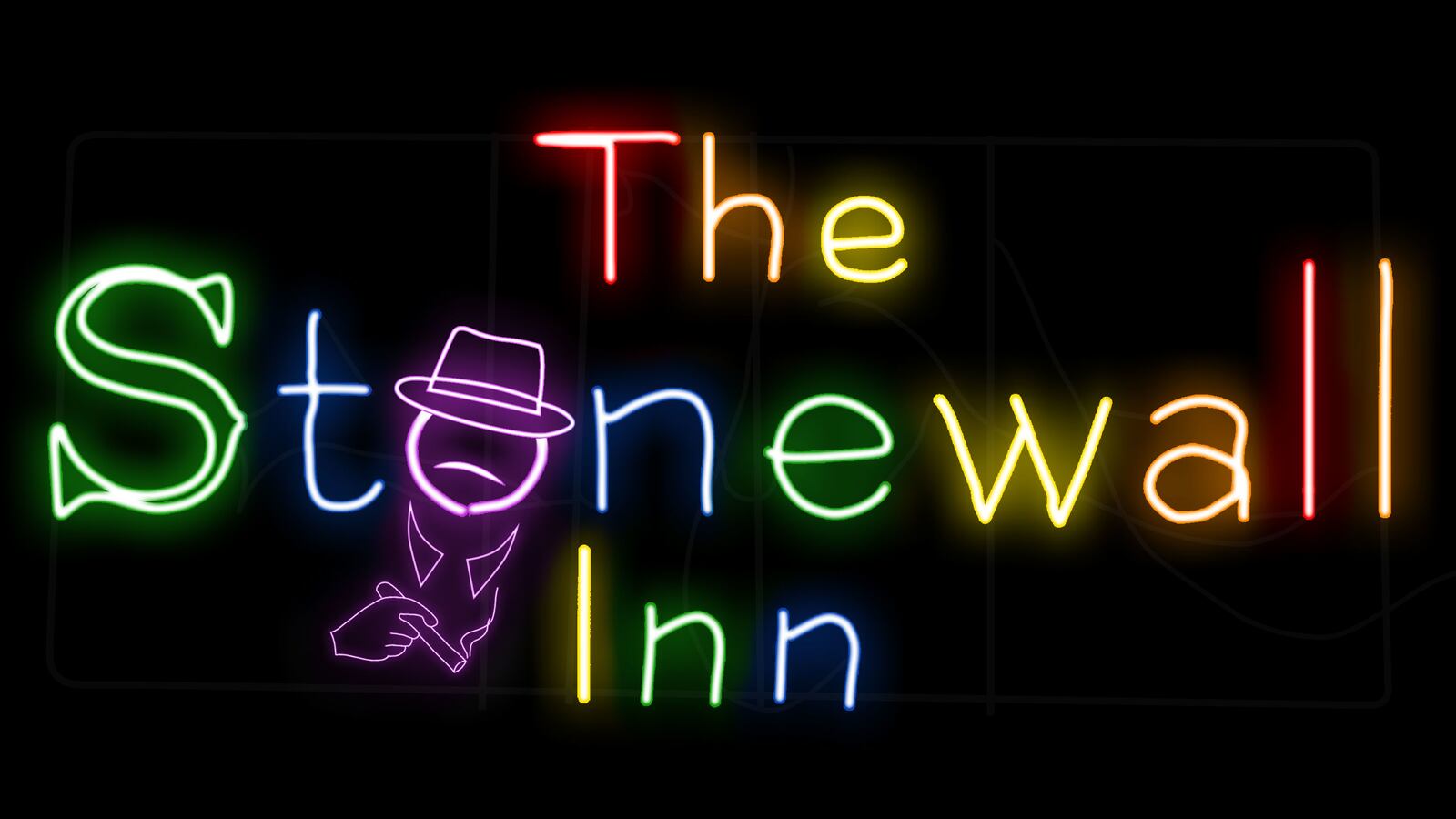After the first night of the Stonewall Riots, graffiti scrawled next to the boarded-up bar summarized the forces aligned against gay bar patrons in New York in 1969:
PROHIBITION
CORUPT$ COPS$
FEED$ MAFIA
A pamphlet soon appeared urging gay New Yorkers to “get the Mafia and the cops out of gay bars.” Its author was Craig Rodwell, owner of the Oscar Wilde Memorial Bookshop in Greenwich Village, and an early proponent of the need to stand up to the police and the Genovese crime family, which at that time controlled most Greenwich Village gay bars, including the Stonewall Inn.
It’s a measure of the courage displayed by the denizens of the Stonewall and their supporters that they were, in effect, taking on two gangs: the Mafia and the New York Police Department. That’s because back then the NYPD often functioned as a legally sanctioned gang that harassed gay men and women.
“It was really heroic,” says Alex Hortis, author of The Mob and the City, an exhaustively researched history of the New York Mafia. “A lot of people in New York were terrified of the Mafia. Imagine being up against not only the legal apparatus, but also the underworld.”
Running gay bars was actually an ideal business for the mob.
“The Mafia didn’t pick on people their own size,” says Hortis, whose next book focuses on the mob’s role in gay bars nationwide. “They tended to pick on the weak, especially people who couldn’t go running to the police.” And as late as 1969, this was certainly true of the LGBT community. Drag queens were especially vulnerable since it was illegal for a New Yorker to dress as a member of the opposite sex.
The mob’s domination of gay bars was a natural outgrowth of its role in running speakeasies during Prohibition. The 25th Amendment, which ended Prohibition in 1933, gave states “virtual carte blanche authority to regulate alcohol,” says Hortis, a practicing attorney who brings his legal expertise to his analysis of Mafia history. The constitutional change handed state governments a tool to crack down on homosexuals.
What followed was what Hortis calls, “Gay Prohibition—a form of alcohol prohibition, except that the restrictions were on homosexuals.” At time of the Stonewall uprising, same-sex kissing and dancing in bars was considered “disorderly conduct” and could result in the loss of a liquor license for the bar.
In this hostile environment, gay bar owners needed protection from the police—a service that the mob had fine-tuned during Prohibition. And many members of the gay community came to believe that the only way to keep their bars open was to rely on the mob. As Hortis puts it, the Mafia “knew how to turn the regulatory state to their advantage.”
The Stonewall was nominally owned by three Mafia-connected lowlifes. The real boss, however, was Genovese family capo Matty “the Horse” Ianniello. The gangsters who ran the Stonewall reportedly paid the Sixth Precinct of the NYPD a monthly stipend of $1,200 to keep the club running with only token police interference.
And the mob knew how to eliminate any competition. “They knew if they got the right police in their pocket, the police could shut down any bar,” Hortis says. If that failed, threats always worked. A member of “the family” would show up to either shut down a competing gay bar or just take it over. “Ultimately it’s the threat of violence that backs up everything,” Hortis stresses.
And, of course, as historian David Carter details in his excellent Stonewall: The Riots that Sparked the Gay Revolution, the mobsters were terrible bar owners who cared only about maximizing profits. The Stonewall had no fire exit. There was no running water behind the bar. Glasses were not washed, but only rinsed in sinks of water that grew increasingly filthy as a night wore on. The toilets routinely overflowed. The lack of hygiene was blamed for an outbreak of hepatitis among the bar’s patrons.
The Stonewall had no liquor license. Instead, it functioned as a “bottle club,” and patrons were charged a fee just to walk in the door. The mob provided stolen liquor that was then watered down, and the drinks were notoriously awful and overpriced. The cigarette machines and jukeboxes inside the bar were also mob-controlled.
“Over a weekend, there was a lot of smoking and drinking,” Hortis says, “so you’re talking about very high profit margins.” According to the celebrated LGBT historian Martin Duberman, the owners of the Stonewall paid a mere $300 in monthly rent and could pull in as much as $11,000 in cash during a busy weekend.
And the mob carried out another illegal business within the Stonewall: drug dealing.
Then there was the potential for blackmail. New York City school teachers, for example, would lose their jobs if they were arrested in a police raid on a gay bar or were otherwise publicly outed.
Federal employees also were vulnerable, as were closeted celebrities and wealthy Wall Street types.
In retrospect, it was inevitable that the Genovese crime family would run the Village’s gay bars because the Village was the Genoveses’ home turf.
“That was their backyard,” Hortis explains. “So you have a vulnerable, illegal industry in the backyard of the Mafia. Of course they’re going to exploit that—of course they’re going to take advantage of it and try to make money off of it.”
The Genovese family was in the gay bar business long before the Stonewall. In fact, Vito Genovese’s second wife, Anna, was a partner in several legendary lower Manhattan drag bars of the ’30s, including the Howdy Club, the 181 Club, and Club 84, whose patrons included Greta Garbo and Judy Garland.
Anna’s partner was Steven Franse, one of the only mobsters the paranoid Vito Genovese trusted. And therein lies a related sordid tale.
When Genovese fled to Italy in 1937 to avoid prosecution on a murder charge, he told Franse to look after his business interests and keep an eye on Anna. But, as Hortis says, “Anna was high maintenance, to put it bluntly. She was a diva.”
During Vito’s absence, Anna, long rumored to have been bisexual, is said to have bedded men and women alike. According to Hortis, “There are drag queens from that era who say they saw her picking up some of the entertainers.” In 1952, when Anna filed for divorce from Genovese, she revealed that his income from the Italian lottery alone was as much as $30,000 a week.
The otherwise vicious Genovese reportedly didn’t have the heart to have Anna murdered, so he did the next best thing: He ordered the 1953 murder of Franse for his supposed failure to keep Anna under control. As per Vito’s orders, it was a particularly vicious rubout: Franse was first beaten and then strangled with a chain. The gruesome details can be found in that classic mob tell-all The Valachi Papers.
The Mafia’s grip on Village gay bars did not end there. And it continued even after the mob closed the Stonewall, shortly after the riots. For one thing, the uprising brought publicity, which is always bad news for the mob. (Look what happened to John Gotti after he became famous.)
“Everyone now knew the Stonewall was a mob bar,” David Carter explains. “The Stonewall was now afraid to serve liquor without a license. They tried to make it as a juice bar, but it closed three months later.”
Soon Craig Rodwell—a relatively unsung hero of the gay rights movement who is credited with being the first person to propose the Gay Pride parade—began urging a boycott of mob-owned bars. “He was the main propagandist of the uprising,” says Carter. “I can’t think of anyone who is more central to the history than Craig.”
Eventually, gay-owned gay bars opened and ran their establishments, offering an alternative to Mafia-controlled bars. But the mob didn’t simply turn and run, says author Lucian K. Truscott IV, who covered the Stonewall riots for The Village Voice.
“Don’t make the mistake of thinking that there was a day that the mob looked at Stonewall and decided, ‘Let’s get out of this business,’” Truscott says. “They wouldn’t get out of a business where there was an opportunity to gouge people and make an unreasonable profit.”
Instead, the mob muscled in on gay bars the same way they took over straight bars: by giving usurious loans to bar owners with tax or other financial problems or simply using the threat of violence to get a piece of the action. Often, Truscott says, they would turn straight bars into gay bars because the profit margins were higher.
And the Mafia continued to cater to—or exploit—the LGBT community in other ways, according to Alex Hortis. Adapting to a changing environment, the Mafia moved into bath houses, leather bars, and gay pornography.
Hortis, whose Mob and the City does a brilliant job of debunking many of the myths about the Mafia, argues that the connection between the mob and gay life should not be surprising.
“When people assume that the Mafia is particularly homophobic, they’re looking backwards through the lens of the closet,” he says. “They’re looking at how the Mafia was in the ’80s and ’90s—and the fictional portrayals of them—and more broadly Italian-American culture. But what they’re forgetting is that earlier on, it was very different. Same-sex activity was unusually high among Italian immigrants because it wasn’t considered gay or homosexual, it was just sexual release.” And as Hortis points out in The Mob and the City, mobster “Crazy” Joey Gallo “talked about how ‘normal, natural, and unremarkable’ homosexuality was in prison.”
So what lessons can be drawn from the connection between the Mafia and the gay community?
"When the State forced gay and transgender people into the closet,” Hortis says, “they were driven into the clutches of organized crime. LGBT people were fighting not only the State, but exploitation by the Mafia. The lesson is that there will always be gay people in every society. When the State tries to suppress them, they won't just disappear; the harms to them will only be compounded."






